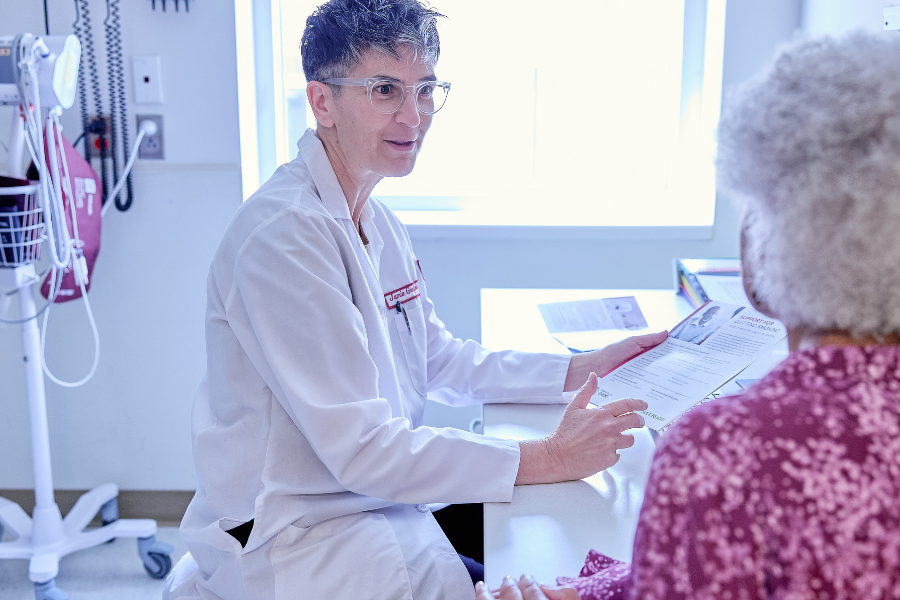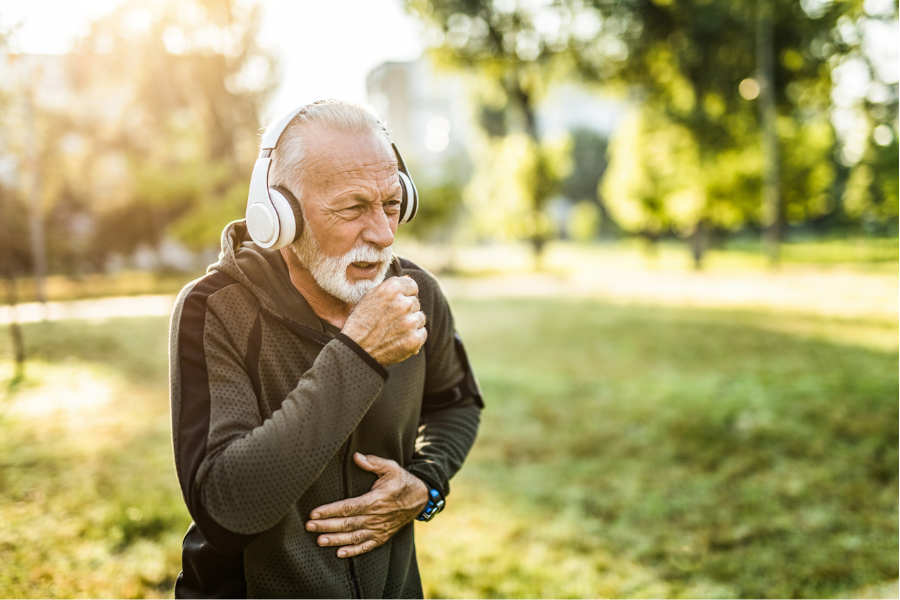A lung transplant can be a truly lifesaving and life-altering surgery for those who need it. Because it is such a major and transformative process, there is much to consider and do both before and after the surgery.
At the Temple Lung Center, we have performed the most lung transplants in the country–so we know how important it is to prepare for life before and after lung transplant surgery. Lung transplant is a partnership between the patient, caregiver, and transplant team.
When families go into the transplant process with a realistic idea of what it takes to live well with a transplanted lung, recovery goes better. We also see improved long-term health. With that in mind, here are seven things I feel patients and their caregivers need to know.
1. Start or continue an exercise regimen.
It’s going to be challenging, but you need to be active before you have your surgery. The Temple Lung Transplant Program has physical and occupational therapists, along with pulmonary rehab experts who will work with you to develop a realistic and safe exercise plan to follow before your surgery. You need to be as strong as possible and in as good of physical condition as you can be prior to your transplant. This will actually make your post-operative physical therapy and occupational therapy easier.
2. Fuel your health with good nutrition.
Many people experience weight gain after a transplant because of the medications they need to take and because they are not working as hard to breathe.
At Temple, you can partner with a dietitian to develop a nutritional plan that meets your needs and your tastes — and helps you get to and stay at a healthy weight.
Your plan will depend upon your weight, blood work, and medications. Your dietitian will consider all of these factors when recommending a healthy diet for you.
After transplant, there are also some foods to avoid. Because of immunosuppressive medications you must take after a transplant, you become more vulnerable to food poisoning. Therefore, after transplant, you need to avoid foods such as:
- Uncooked fish, such as raw oysters or sushi
- Raw or undercooked meat and poultry
- Raw or undercooked eggs or foods that contain them
- Unpasteurized milk and cheese
- Raw sprouts, such as bean sprouts
Your dietitian will give you a complete list of foods to avoid and other dietary restrictions.
3. Make smart choices with sun exposure, dental care, vaccinations, and more.
A healthy lifestyle after lung transplant includes some important safeguards that can be surprising for many people, such as:
- Limit sun exposure. Many post-transplant medications can increase the risk of sunburn. Try to avoid direct sunlight between 10am-4pm, when the sun is the strongest. When you are outside, wear sunscreen with an SPF of 30 or higher. Wide-brimmed hats and clothing with ultraviolet protection can provide protection as well.
- Tell your dentist about your transplant and medications before any dental work. Some people on immunosuppressant medicines need to take antibiotics before and after any dental work. This will help prevent infection.
- Get a flu shot annually and a pneumonia vaccine every five years. Talk to your transplant team about any travel-related vaccinations.
- Don’t smoke and avoid areas that are smoky.
- Talk to your transplant team about wearing a mask in public. When possible, stay away from people with contagious infections, like the flu.
- Avoid moldy environments such as crawlspaces, and don’t do tasks like clean the gutters or dig in fresh soil because they may be sources of mold too. Breathing in mold after a lung transplant increases your risk for health complications, like infections.
- Don’t change the kitty litter if you have a cat. You risk developing an infection called toxoplasmosis that can be found in cat feces. Discuss the potential risks of any pets besides dogs and cats with your transplant team.
- Don’t drink alcohol, including nonalcoholic beer, which still contains a small amount of alcohol. Alcohol can interfere with your medications that help prevent organ rejection.
4. Get active and stay active.
In general, you can return to regular activities as soon as you feel better after your transplant. Your care team will work with you to create a post-surgical exercise plan that meets your needs and fits your interests. This can also include breathing strategies.
I recommend that patients start with stretching and walking after surgery. These activities will help you regain strength and range of motion. Keep in mind, though, that your initial recovery can take months. No matter how long it’s been since your transplant, increasing activity gradually is a good idea.
In general, you should avoid contact sports after a lung transplant. If you’re not sure if an activity is appropriate, talk to your transplant team.
5. Enjoy sexual activity, but consider birth control.
Like most physical activities, sex after lung transplant is limited only by physical symptoms. When you’re ready, feel free to engage in the sexual activities and positions that work for you. However, if you’re of child-bearing age, birth control is a necessity.
Some post-transplant medications can be dangerous to a developing fetus. For this reason, we recommend using two forms of birth control. If you are considering having a child after your lung transplant, work with your transplant team to adjust medications before having unprotected sex.
6. Find ongoing support for both the patient and the caregiver.
Being evaluated and waiting for a transplant are stressful times. It’s easy to overlook how overwhelming the recovery and return to “normal” can be — for patients and their caregivers as well.
From my perspective, there’s no one better than another patient or caregiver to provide insight and support on how to handle all of these things. This is true both before and long after surgery. At the Temple Lung Center, we have a support group for transplant candidates, patients, and caregivers as well. Talk to your transplant team about participating. They will connect you with people who have personal experience with lung transplant.
You can also find incredible disease-specific support groups. I recommend the Wescoe Foundation for Pulmonary Fibrosis and the Pulmonary Fibrosis Foundation. Both of these organizations provide resources and support for patients and families.
7. If you had a single lung transplant, don’t forget about the lung left behind.
Most lung transplant patients have had fibrosis or emphysema. This means a single transplant is still leaving one diseased lung behind. Even if the transplanted lung is working perfectly, your transplant team will still want to keep an eye on the remaining lung.
At our center, we perform a CT scan on the chest at least once a year. This helps us watch for nodules and other potential problems. We also work closely with patients and caregivers to manage any disease in this lung. Sometimes inhaler therapy or additional imaging is appropriate. At the Temple Lung Center, we work together to manage the health of all lungs.
Consult an expert
Many of our lung transplant patients come to us when other doctors and centers say they don’t have any more options to offer a patient with a serious lung disease. At Temple, we do more lung transplants than any other transplant program in the country.
Request an appointment today with one of our lung experts or call 800-TEMPLE-MED.
Helpful Resources
Looking for more information?

